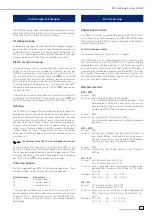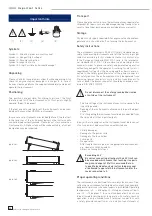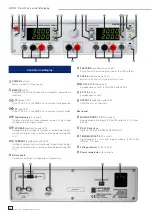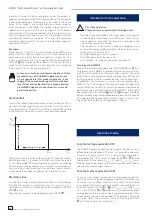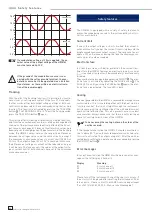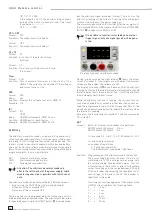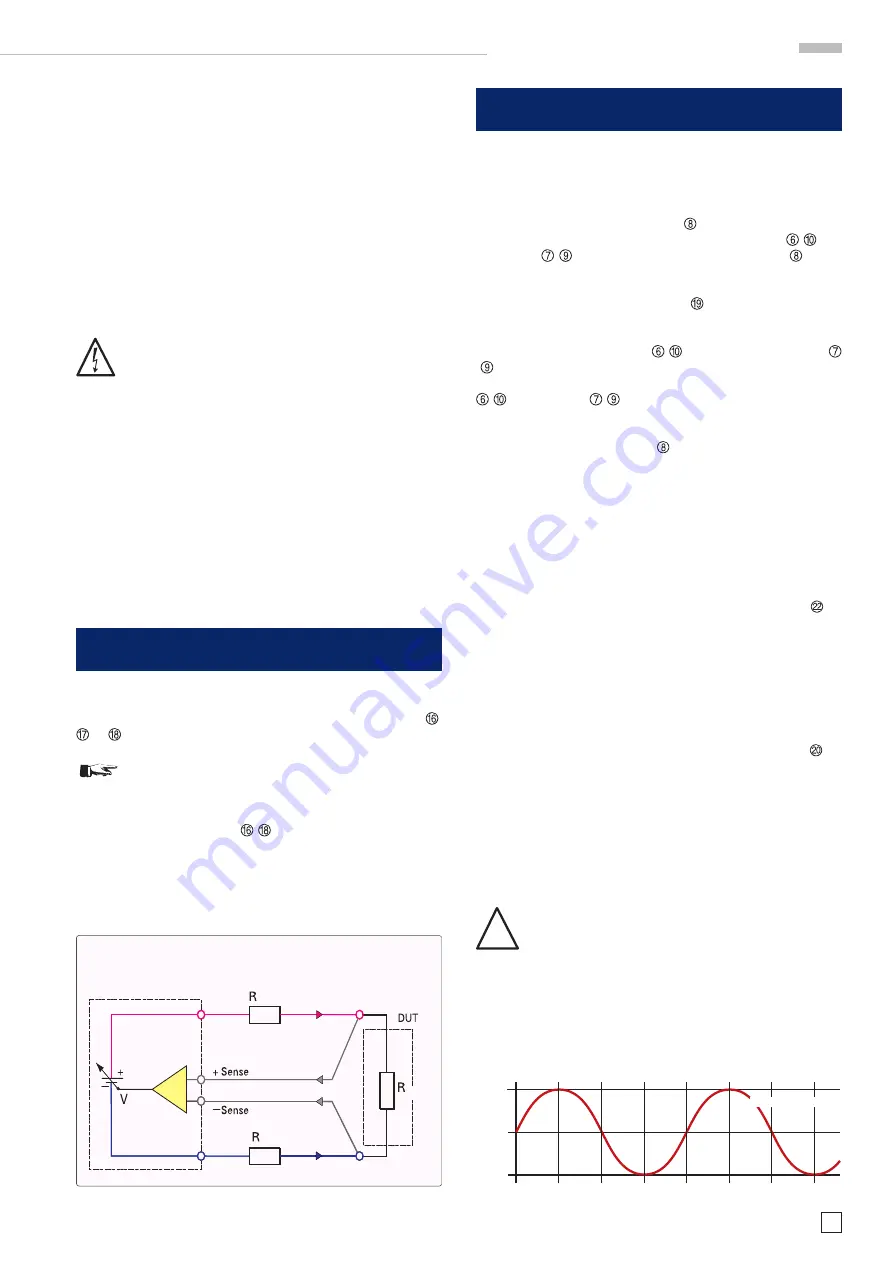
25
Subject to change without notice
Compensation of the voltage drop across the cables
Power source
Sense error
amplifier
source
variable
+ Source
cable
+ Sense Pick-Up
– Source
cable
– Sense Pick-Up
load
Connecting the load
The load has to be connected to the middle safety terminals ,
or
. For the connection please use 4 mm banana plugs.
STOP
Please note the polarity of the load terminals: the
red terminal is the positive, the black terminal is
the negative connector.
The transparent terminals
/
are the SENSE inputs. With
these SENSE terminals the voltage loss across the cables
can be compensated. The HM8143 balances this voltage loss
automatically and the load will see the voltage set. Connect
two separate measurement cables in parallel to the connec-
ting cables of the load.
O p e r a t i o n o f t h e H M 8 1 4 3
Operation of the HM8143
Setting output voltages and the current limits
The changeable parameters (output voltages and current li-
mit) are set using the rotary knob
. To change values, fi rst
select the appropriate parameter with the VOLTAGE
/
and
CURRENT
buttons. Then use the rotary knob
to set
the desired value.
If the outputs are on (OUTPUT LED
is on) the HM8143 dis-
plays will show the actual values, that means the power supply
will show the measured values of voltage and current (Vout and
Iout). Operating the VOLTAGE
/
or the CURRENT button
/
will switch the HM8143 to setting mode, which is being indi-
cated by glowing of one of the LEDs above the buttons VOLTAGE
/
or CURRENT
/
. The corresponding display will show
the nominal value of the output voltage or current limit. Now
the desired value of the output voltage or current limit can be
adjusted with the rotary knob
. This mode will be left after
about 2 seconds after the last operation of the rotary knob. The
HM8143 will then display the measured values of the output
voltage and current again.
Trigger Input + Trigger Output (Start/Stop)
In order to permit easy triggering of an oscilloscope connected
to the output of the HM8143, especially in arbitrary mode, the in-
strument is equipped with a BNC socket TRIGGER IN/OUT
on
its rear panel. This is confi gured as a tristate output and permits
a trigger signal to be taken after each signal period in arbitrary
mode, or the arbitrary function to be activated by an external
trigger signal (TTL level).
Modulation inputs
By virtue of the modulation inputs MODULATION R/L
on
the rear panel of HM8143, it can be also be used as a modula-
tion power amplifi er. The input voltage is amplifi ed with factor
3. The frequency range (-3 dB) goes from DC to 50 kHz. The
allowable external voltage ranges from 0 V to 10 V.
The output voltage of HM8143 will be the sum of:
V
out
= (V
modin
x 3) + V
set
!
Please note that the sum V
out
= (V
modin
x 3) + V
set
must not exceed the value of 30 V, as then the pro-
per functionality of the current regulation is not
ensured and the connected load can be destroyed.
Electronic load
The HM8143 also offers a mode in which it functions as an
electronic load (current sink). The instrument goes into this
mode automatically, and it can be recognized by a negative sign
(–) in front of a displayed current value. The same limit values
apply to voltage and current as in normal operating mode. In
this operation mode the output voltage measured is normally
greater than the nominal value (V
actual
>
V
set
)
Serial or parallel operation
To increase the output voltages and currents, the two chan-
nels of the power supply can be connected either in series or
in parallel.
It is important to keep in mind that when the two
output circuits are connected in series a greater
voltage than that ordinarily permitted for safety
reasons can develop. The HM8143 may therefore
be used only by personnel who are familiar with
the associated risks.
Arbitrary waveform mode
By interface the HM8143 can also be made to generate freely
programmable waveforms within the limit values set (arbitrary
mode). See chapter Arbitrary.
Example: Modulationsource: V
mod
= 2,0 V
ss
f
mod
= 50 Hz
channel
I V
set
=
1
0 V
channel
II V
set
= 10 V
0 V
1 V
2 V
modulation signal



